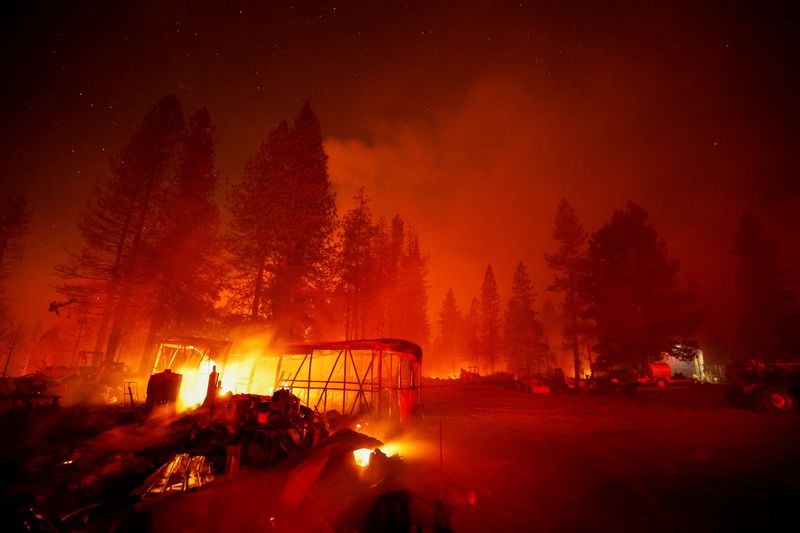California wildfire threatens communities in Sierra Nevada foothills
2022.09.14 16:02
[ad_1]

fast-growing California wildfire was threatening a string of small foothill communities northeast of Sacramento on Wednesday, even as firefighters made progress containing a flank that had grown rapidly the day before.
The Mosquito Fire has burned nearly 59,000 acres (24,000 hectares), forcing the evacuation of some 11,000 people in Foresthill, Volcanoville, Georgetown and other communities between Sacramento and Lake Tahoe.
The fire, one of about a dozen burning across California on Wednesday, grew by about 3,000 acres overnight, and containment dropped from 25% to 20%, said Scott McLean, spokesman for the California Department of Forestry and Fire Protection (Cal Fire).
Ongoing drought and rugged, canyon terrain have created prime conditions for the fire to spread quickly, although high winds that could propel it even further are not expected, McLean said.
The fire spread rapidly on Tuesday because a weather system that had kept clouds and smoke trapped over the fire area lifted, making more oxygen available to fuel its growth, he said. Similar conditions could fuel more growth on Wednesday, he said.
Cal Fire urged about 50 households who have not yet evacuated to do so, saying the worst may not be over, and that remaining endangers their lives as well as the safety of firefighters.
Last week, an extended period of extreme heat worsened fire conditions and threatened the state’s power grid as demand hit an all-time high, but the weather turned cooler over the weekend.
The power company PG&E (NYSE:) Corp said last week that there had been electrical activity near one of its transmission poles in the area around Oxbow Reservoir where the fire started. The company also said that the U.S. Forest Service had placed caution tape around the base of the pole.
The power company’s equipment has been blamed for sparking numerous wildfires, including some of the state’s most deadly and destructive.
The company sought bankruptcy protection after wildfires sparked by its equipment in 2017 and 2018 drove the utility’s potential liabilities into tens of billions of dollars.
[ad_2]
Source link







